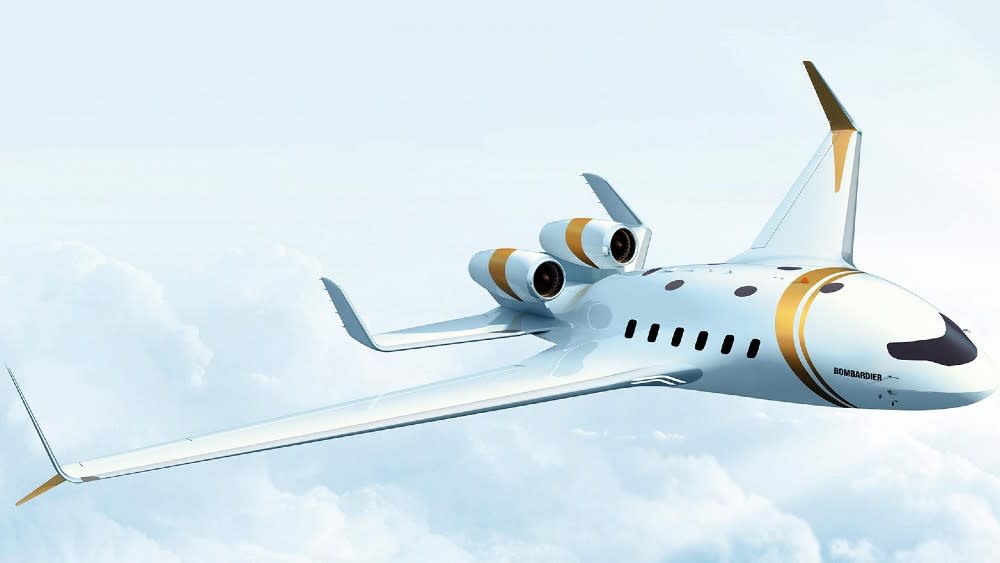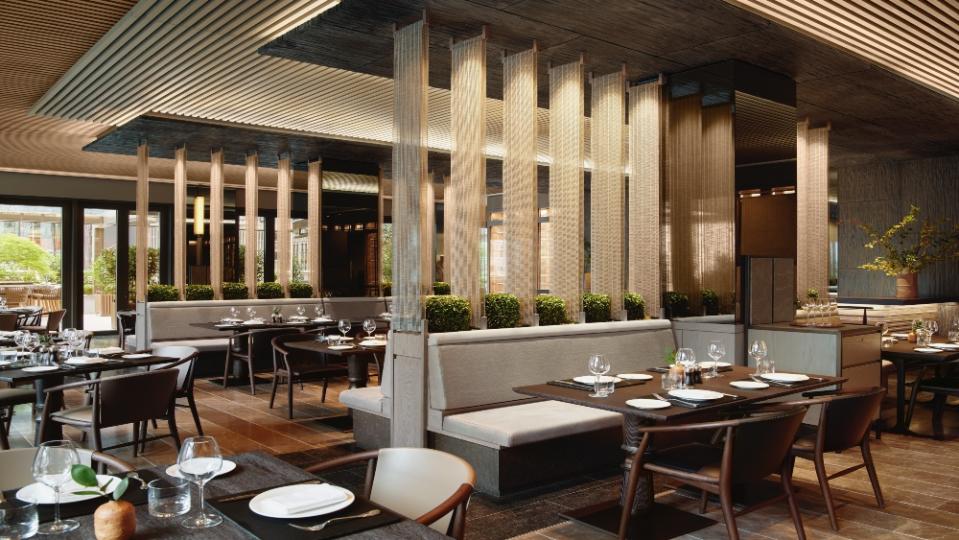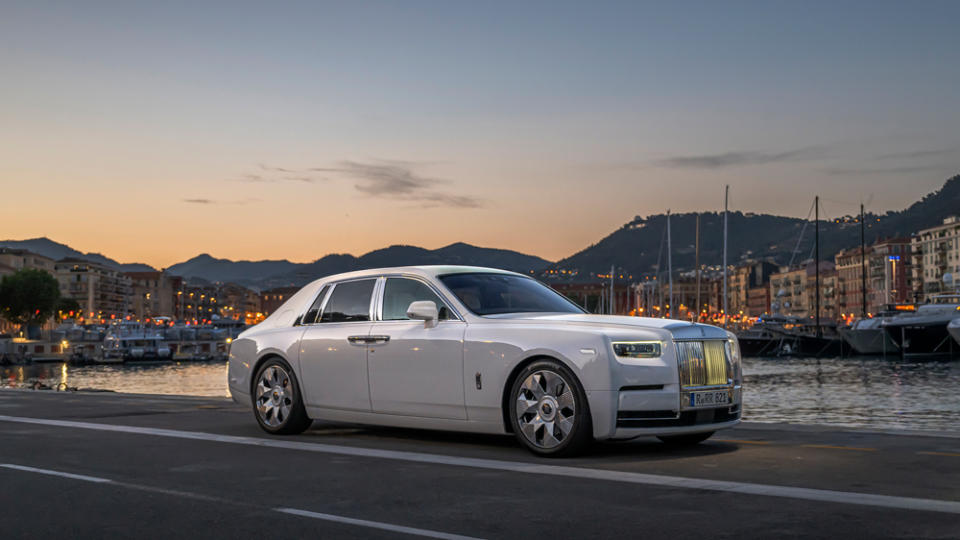What Private Jet? How Billionaires Are Finding Ways to Spend Their Wealth Unnoticed

Walking into Bacchanalia in London’s Mayfair is like dying and going to Elton John heaven. Here, more is never enough. Statues of half-naked women and men and cantering horses fly off the walls. The columns have flutes on their flutes. Almost every dish on the “Greco-Roman feasting” menu can come with extra caviar or truffle.“ For those who long for escapism, sway this way,” the restaurant’s creator, Richard Caring, purrs.
The former rag trader turned ringmaster for the world’s moneyed elite—he also owns Annabel’s, Scott’s and Harry’s Bar in Mayfair—has another trick up his Giorgio Armani-tailored sleeve. In one corner of the restaurant is a gold-studded door so thick it looks bombproof. It’s certainly strong enough to keep out “civilians”. Behind it lies Apollo’s Muse, the world’s most exclusive private members’ club. You cannot apply to join. That would be far too Soho House. You have to be invited. And, once invited, you have to stump up a joining fee, rumored to exceed £100,000, with an annual subscription of £20,000. What do you get for all that cash? Access to a shrine to wealth, decorated with frescoes and sculptures sourced by antiquities specialists at Sotheby’s and Christie’s auction houses; a house string quartet (as well as a DJ for late nights); and yet more truffle and caviar, this time paired with Cristal rather than mere Dom Pérignon.
More from Robb Report
This Dubai Hotel Just Unveiled a Lavish Private Jet for Parties Above the Clouds
'Too Early': Brian Cox Was Unhappy With the 'Succession' Twist That Changed the Whole Season
A Millionaire Is Selling His Private Jet After Learning About Its Environmental Impact
It would be easy to dismiss Apollo’s Muse as an outlier for that curious breed of plutocrat who wants to be ripped off, and be seen to be ripped off, because it shows they’re so crazy-rich they don’t give a fig. But it is just one example of a new trend among the 0.1 per cent: inconspicuous consumption. The super-rich are disappearing into a private snowglobe world in which they can feel assured no one will judge them or—horror!—tag their image on social media.
The rich are still rich. So much wealth has been created over the past two decades that even the recent falls in global stock markets and rising inflation amount to a blip for many. As Milton Pedraza, CEO of the New York-based Luxury Institute, puts it: “The cheques a family office sends out every month will be for $80,000 instead of $100,000, but that’s still a lot of money.” Consultants at Bain & Company calculate that personal spending on luxury goods and services rose by 22 per cent in 2022 and will increase by up to 8 per cent this year. But with a war on, energy shortages and a cost of living crisis, flaunting your good fortune in public “doesn’t feel right”, says Robert Burke, chief executive of the retail consultancy Robert Burke Associates. The only way to peacock these days is in front of others like you in a “safe space”.
The trend is at its most extreme in travel, which, since the days of the Grand Tour, has been a key signifier of status. Private jet use in Britain has soared, with a flight taking off every six minutes from UK airports last year according to CE Delft, a Dutch environmental consultancy.

At 50,000ft over the Atlantic on a £55 million Gulfstream G650 from Farnborough to New York’s Teterboro private airport, Marine Eugene, the European boss of Flexjet who runs a 235-strong private jet fleet, explains why. “Users suddenly have different priorities. Flying private is not about ego. Today it’s all about privacy and security for businesses and families,” she says. Her Gulfstream subscribers spend more than $1.5 million a year using the jet for about 100 hours each.
The super-rich can, if they want, take an entire multistop holiday by private jet. Yes, the £150,000 package holiday is now a “thing”. Deborah Calmeyer, CEO and founder of Roar Africa, uses an Emirates Executive private jet for her company’s African safaris, flitting to and from Victoria Falls in Zimbabwe, the Masai Mara and Serengeti, and Rwanda for gorilla watching. The price? Up to $165,300 per person.
The former British Army captain Jimmy Carroll also uses Africa as a base for trips that have a privacy premium priced in. When guests of his company, Pelorus, land at Echo camp in Antarctica from Cape Town, they are greeted with a martini, shaken with 10,000-year-old ice, before settling in for a few days of fat-biking, skiing and ice-climbing. All for $1.25 million for up to 12 guests for seven nights.
Going so far away that no one can see you is also a growing trend for those who prefer to sail than to fly. There are 88 “explorer” superyachts, many with strengthened hulls that can break through ice, under construction in boatyards around the world—a record. Another 110 are likely to be delivered to new owners by the end of the decade, according to analysis from Boat International magazine. Their owners now regularly brave the voyage from Ushuaia, the southern tip of Argentina, across the Drake Passage for Antarctic cruising. “It’s a new age of exploration, with seven-star service, spa pools and a guarantee of no paparazzi,” explains Stewart Campbell, editor-in-chief of Boat International.
Hotels and villas have long promised privacy and discretion, but some operators are taking exclusivity to a different level. The Aman New York is the grandest new hotel in one of the grandest hotel cities in the world, and it comes with the grandest price. The “cheapest” room will set you back $4,000 a night (breakfast not included). You’d think it would welcome the wealthiest New Yorkers, as Claridge’s and the Connaught welcome London’s elite. Not so. If you live in New York and want to pop in for a coffee without booking a room, you will need to join the Aman Club. That will cost you $200,000, plus the price of the drink. Yes, you read that right: a flat white is the price of an apartment in the suburbs.
“For some people it may sound like a lot of money, but you’re paying to be among certain people,” Vladislav Doronin, the St Petersburg-born owner of the Aman hotel brand—and former boyfriend of Naomi Campbell—tells me over green tea.
Villas are also pulling up the drawbridge, creating a type of lodging called the “villotel”. Many wealthy guests who book holidays with George Morgan-Grenville, the founder of the spiffy tour operator Red Savannah, now rent “a fully staffed, large, super-luxury villa to create their own private five-star hotel,” he says. Why? “They know they can get up to whatever they want and invite over whoever they want. And they certainly won’t have to put up with brash Russian oligarchs around the hotel pool.” The bill for renting fully staffed Villa Astor on the Amalfi coast of Italy nudges €200,000 a week in summer.
As with villas, so with homes. Quietly does it. Nobody wants to see anything so gauche as a label on an Afghan pouffe any more. So, out go the splashy Italian brands, notably Versace and Fendi Casa, and in their place come custom furniture and architectural features. The competition among the Holland Park set these days is for walls, floors and staircases clad in bespoke vegetable tanned leather by Bill Amberg Studio (from £750 per tread). It is a small step to one of Silverlining Furniture’s fumed eucalyptus ping-pong tables for the games room (from £50,000). Top of everyone’s call list is Rubelli, a family-run Venetian fabric creator. Should you fancy a wallcovering in its particular cream silk damask that screams subtle affluence, don’t expect change from £500 a metre.
You might not imagine stealth wealth would extend to something as obviously opulent as luxury cars, but it does. At the Rolls-Royce factory in Goodwood, craftsmen and women now spend more time creating bespoke interiors than they do perfecting personalized paint jobs for the exterior. The cabin of the “Million Stitch Phantom” cost more than the car itself because the owner requested that images of flowers and butterflies be hand-stitched into the leather-lined ceiling—called the headliner in Rolls-Royce parlance—as well as the doors, upholstery and dashboard, known as the gallery. “The magic is on the inside,” says the company’s chief executive, Torsten Müller-Ötvös.

The rich cannot live in a gilded bubble all the time. Sometimes they have to step outside their Rollers. Then the trick is to adopt “quiet luxury”. For fashion that means “stealth-wealth minimalism”. Its poster girl is Gwyneth Paltrow. In that recent courtroom drama in Utah her neutral, no-color-color outfits could, to the casual observer, have come from Uniqlo. But she knew those who know could tell they were from brands such as The Row, an aesthetically understated label with anything but understated prices. A plain white linen shirt in the latest womenswear collection costs £1,130.
Can the race to be extravagantly moneyed yet persistently discreet continue? Of course. There’s not much point in being super-rich unless you can do what you want, and where there are billions there’s a way. But there are signs of growing opposition to the most carbon-hungry consumption. Green campaigners are calling for a ban on private jets and superyachts. They say private jets are between five and fourteen times more polluting per passenger than commercial planes, while a single superyacht spews an estimated 16,320 tons of carbon-dioxide-equivalent gases into the atmosphere annually.
The campaign is getting personal. One Twitter account, @CelebJets, has tracked the flights of well-known figures using public data and then calculated their carbon emissions. Max Thrower, of the Aviation Environment Federation, is calling on governments to impose higher taxes on private jets and set a deadline for them to be zero emission or face a ban. Such campaigns are beginning to work. In April, after sustained pressure from activists, Amsterdam’s Schiphol airport announced it would ban private jets.
No UK airport has followed and those who satisfy the super-rich’s every whim are not so sure demand will dip, whatever campaigners try—especially when the 0.1 per cent begin to use more fuel from sustainable sources to power their flights of fancy. As the butler on her Gulfstream G650 opens a bottle of 1995 Château d’Yquem to complement the bitter chocolate dessert before we land at Teterboro, Flexjet’s Marine Eugene sighs: “Once you start flying private, it’s very hard to go back.”
Additional reporting by Katrina Burroughs
Sign up for Robb Report's Newsletter. For the latest news, follow us on Facebook, Twitter, and Instagram.

